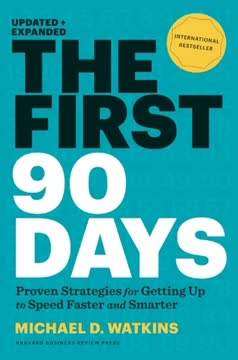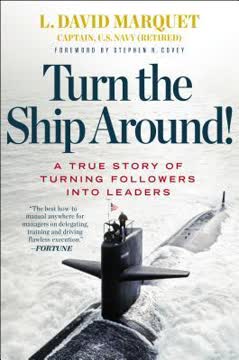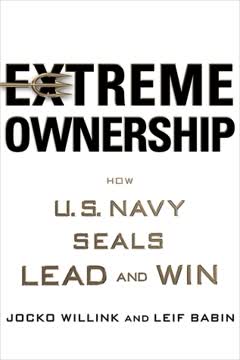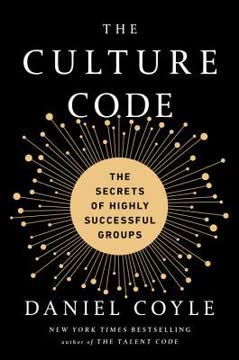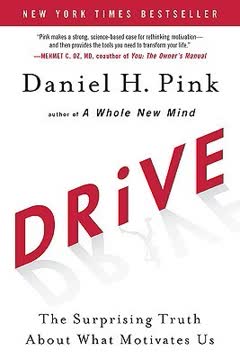가지 주요 요점
1. 안전의 원: 조직 내 신뢰와 협력 구축
우리가 그룹에 속해 있다고 느끼고 함께 일하는 사람들을 신뢰할 때, 우리는 자연스럽게 외부의 도전과 위협에 맞서 협력하게 된다.
신뢰는 기본이다. 리더가 직원들이 보호받고 가치 있다고 느끼는 "안전의 원"을 만들 때 조직은 번성한다. 이러한 환경은 신뢰, 협력, 혁신을 촉진하여 팀이 내부 위협보다는 외부 도전에 집중할 수 있게 한다.
안전의 원의 주요 요소:
- 열린 소통
- 상호 지원
- 공유된 가치와 목표
- 권한 부여와 자율성
직원들이 안전하다고 느낄 때, 그들은 더 많이:
- 계산된 위험을 감수한다
- 아이디어를 자유롭게 공유한다
- 효과적으로 협력한다
- 조직의 사명에 헌신한다
2. 리더십은 자기 이익이 아닌 타인을 보호하고 섬기는 것
리더십은 덜 하는 것이 아니라 더 많이 하는 책임이다.
섬기는 리더십. 진정한 리더는 개인적인 이익보다 팀원들의 복지를 우선시한다. 이러한 접근 방식은 조직 내에서 충성심, 신뢰, 헌신을 구축한다.
효과적인 리더의 특성:
- 공감과 이해
- 팀을 위해 희생할 의지
- 타인을 개발하고 권한을 부여하는 데 집중
- 성공과 실패에 대한 책임
타인을 우선시함으로써, 리더는 조직 전반에 긍정적인 행동의 파급 효과를 만들어내며 상호 지원과 공유된 성공의 문화를 조성한다.
3. 우리의 생물학이 직장 행동을 주도한다: E.D.S.O. 화학물질의 힘
시스템이 균형을 이룰 때, 우리는 거의 초자연적인 능력을 얻는 것처럼 보인다. 용기, 영감, 통찰력, 창의력, 공감 등을 예로 들 수 있다.
화학적 균형이 중요하다. 네 가지 주요 화학물질 – 엔도르핀, 도파민, 세로토닌, 옥시토신 (E.D.S.O.) – 은 우리의 직장 행동과 관계에 큰 영향을 미친다.
E.D.S.O. 이해하기:
- 엔도르핀: 신체적 고통을 가리고 인내를 가능하게 함
- 도파민: 성취에 대한 동기와 보상을 제공
- 세로토닌: 자부심, 자신감, 지위를 촉진
- 옥시토신: 신뢰, 충성심, 사회적 유대를 구축
이 화학물질의 균형을 맞추는 환경을 조성하는 리더는 더 생산적이고 혁신적이며 결속력 있는 팀을 육성한다. 직장 역학에서 생물학의 역할을 인식함으로써 조직은 직원의 복지와 성과를 지원하는 더 나은 정책과 관행을 설계할 수 있다.
4. 공감과 인간적 연결은 조직의 성공에 필수적이다
공감은, 조니 브라보가 설명하듯이, "우리가 리더라고 부르고 싶다면 모든 사람에게 매 순간, 매 분 제공해야 하는 서비스"이다.
의미 있는 관계를 육성하라. 오늘날의 빠르게 변화하는 기술 중심의 작업 환경에서 인간적 연결과 공감은 강력한 팀과 성공적인 조직을 구축하는 데 그 어느 때보다 중요하다.
공감과 연결을 촉진하는 방법:
- 적극적인 경청
- 대면 상호작용
- 팀 빌딩 활동
- 멘토링 프로그램
- 집단적 성취 축하
공감과 인간적 연결을 우선시함으로써, 리더는 더 지원적인 작업 환경을 조성할 수 있으며, 이는 직원 만족도, 충성도, 생산성의 증가로 이어진다.
5. 추상화의 위험과 인간 중심 리더십의 중요성
우리가 숫자적 추상화를 통해 인간성을 분리할 때, 우리는 밀그램의 자원봉사자들처럼 비인간적인 행동을 할 수 있다.
측정 지표를 인간화하라. 조직이 성장하고 데이터 기반 의사결정에 더 의존하게 되면서, 이러한 결정의 인간적 영향을 간과할 위험이 있다. 리더는 정량적 지표와 사람들에 대한 질적 이해를 균형 있게 유지해야 한다.
인간 중심 접근 방식을 유지하기 위한 전략:
- 모든 수준의 직원과 정기적인 대면 상호작용
- 결정의 인간적 영향을 설명하는 스토리텔링
- 성과 평가에 질적 피드백 포함
- 부서 간 협력과 공감 장려
인간 요소를 최우선으로 유지함으로써, 리더는 조직과 그 구성원 모두에게 이익이 되는 더 윤리적이고 효과적인 결정을 내릴 수 있다.
6. 단기 성과와 장기 조직 건강의 균형 맞추기
이익은 그들의 무결성을 위반할 가치가 없다.
장기적 사고. 단기 성과는 중요하지만, 장기적인 조직 건강을 희생하면서 이를 우선시하는 것은 해로울 수 있다. 리더는 즉각적인 목표 달성과 지속 가능한 번영 조직 구축 사이에서 균형을 맞춰야 한다.
단기와 장기 초점을 균형 있게 맞추기 위한 주요 고려 사항:
- 직원 개발과 복지에 투자
- 압박을 받을 때도 윤리적 관행 유지
- 혁신과 지속적인 개선의 문화 조성
- 이해관계자와 강력한 관계 구축
- 조직의 가치와 관행을 정기적으로 재평가하고 조정
균형 잡힌 접근 방식을 통해 조직은 지속 가능한 성공을 달성하고 도전 과제에 직면했을 때 무결성을 유지할 수 있다.
7. 현대 직장 도전 과제 극복: 기술, 세대 차이, 목적
인간은 자신을 위해 봉사하려는 동기 때문에가 아니라 타인을 위해 봉사하려는 영감 때문에 오만 년 동안 번성해왔다.
적응하고 영감을 주라. 현대 직장은 기술 중독, 세대 차이, 목적 추구 등 독특한 도전 과제에 직면해 있다. 리더는 이러한 문제를 해결하여 번영하는 조직을 만들어야 한다.
현대 직장 도전 과제를 극복하기 위한 전략:
- 기술 사용을 관리하고 대면 상호작용을 촉진하는 정책 구현
- 멘토링 및 역멘토링 프로그램을 통해 세대 차이 극복
- 조직의 목적과 각 역할의 기여도를 명확히 전달
- 일과 삶의 균형과 개인적 성장을 장려
- 의미 있는 협력과 공유된 경험의 기회 창출
이러한 도전 과제를 정면으로 다룸으로써, 조직은 더 몰입하고 생산적이며 만족스러운 인력을 만들 수 있다.
8. 무결성과 책임의 문화를 조성하기
무결성은 우리의 말과 행동이 우리의 의도와 일치할 때이다.
말과 행동이 일치하라. 무결성과 책임의 문화는 조직 내외부의 신뢰를 구축하는 데 필수적이다. 리더는 이러한 가치를 일관되게 모델링하고 이를 강화하는 시스템을 만들어야 한다.
무결성과 책임의 문화 요소:
- 윤리적 기준과 기대의 명확한 전달
- 의사결정 과정의 투명성
- 모든 수준에서 정책의 일관된 시행
- 윤리적 행동에 대한 인정과 보상
- 우려나 위반 사항을 보고할 수 있는 안전한 채널
- 정기적인 윤리 교육 및 토론
무결성과 책임을 우선시함으로써, 조직은 강력한 명성을 구축하고 최고의 인재를 유치하며 더 탄력적이고 성공적인 비즈니스를 만들 수 있다.
9. 공유된 고난이 팀 결속과 혁신에 미치는 영향
우리가 애정으로 기억하는 것은 일이 아니라, 일을 해내기 위해 그룹이 함께 했던 동료애이다.
함께 도전을 받아들여라. 공유된 고난과 도전은 팀 결속과 혁신의 강력한 촉매제가 될 수 있다. 팀이 함께 어려움을 겪을 때, 그들은 종종 더 강하고 결속력 있게 된다.
팀 성장을 위한 공유된 고난을 활용하는 방법:
- 도전을 집단적 문제 해결의 기회로 프레임
- 작은 승리와 진행 상황을 축하
- 장애물과 우려에 대한 열린 소통 장려
- 도전을 극복하기 위한 자원과 지원 제공
- 어려움을 극복한 후 배운 교훈과 성장 반성
공유된 고난을 받아들임으로써, 팀은 더 강한 유대감을 형성하고 문제 해결 능력을 향상시키며 조직 내에서 혁신을 촉진할 수 있다.
마지막 업데이트 날짜:
FAQ
What's Leaders Eat Last about?
- Focus on Leadership: Leaders Eat Last by Simon Sinek delves into leadership dynamics, emphasizing the importance of leaders prioritizing their team's well-being over personal gains.
- Circle of Safety: Introduces the "Circle of Safety," a concept where leaders create a secure environment, protecting employees from external threats and internal politics.
- Biological Basis: Discusses how neurochemicals like oxytocin, serotonin, and dopamine influence workplace behavior and leadership effectiveness.
Why should I read Leaders Eat Last?
- Understanding Human Behavior: Offers insights into the biological and psychological factors affecting workplace dynamics, enhancing leadership practices.
- Improving Workplace Culture: Provides practical advice for creating a positive culture that fosters collaboration and loyalty.
- Real-World Examples: Uses compelling stories from military and corporate settings to illustrate key concepts, making them relatable and applicable.
What are the key takeaways of Leaders Eat Last?
- Leaders Eat Last: Effective leaders prioritize their team's needs, fostering loyalty and commitment.
- Empathy is Essential: Empathy is crucial for leaders, leading to a more engaged and productive workforce.
- Trust and Cooperation: Building trust within teams is vital; when employees feel safe, they contribute more effectively.
What is the Circle of Safety in Leaders Eat Last?
- Definition: A protective environment created by leaders to shield employees from threats and competition.
- Importance of Trust: Fosters trust and collaboration, allowing employees to focus on work without fear.
- Impact on Performance: Organizations with a strong Circle of Safety see better performance due to increased risk-taking and innovation.
How does Leaders Eat Last relate to modern organizational challenges?
- Addressing Disengagement: Provides strategies to combat employee disengagement by fostering a supportive culture.
- Navigating Politics: Helps leaders minimize internal competition and politics, reducing stress and anxiety.
- Long-Term Success: Emphasizes the importance of employee well-being for sustainable success and loyalty.
What role do chemicals play in leadership according to Leaders Eat Last?
- Biological Drivers: Behavior is influenced by endorphins, dopamine, serotonin, and oxytocin, affecting interactions and leadership response.
- Endorphins and Dopamine: Linked to individual achievement; overemphasis can lead to unhealthy competition.
- Serotonin and Oxytocin: Promote social bonds and cooperation, enhancing teamwork and community.
How can leaders implement the principles from Leaders Eat Last?
- Prioritize Well-Being: Demonstrate care for employees through support and empathy.
- Build Trust: Foster open communication and collaboration to establish a strong Circle of Safety.
- Encourage Teamwork: Create opportunities for collaboration and recognize collective achievements.
What are some real-world examples of successful leadership from Leaders Eat Last?
- Military Leadership: The U.S. Marine Corps exemplifies selflessness and mutual support.
- Barry-Wehmiller: Led by Bob Chapman, prioritizes employee well-being, resulting in high loyalty.
- 3M's Innovation Culture: Emphasizes collaboration and sharing, leading to significant innovation.
How does Leaders Eat Last address the issue of corporate greed?
- Critique of Short-Term Thinking: Argues against prioritizing short-term profits over employee well-being.
- Long-Term Success through Care: Companies that care for employees achieve sustainable success.
- Moral Responsibility: Leaders have a moral duty to protect their people, fostering trust and cooperation.
What are the biological drivers discussed in Leaders Eat Last?
- Dopamine and Performance: Drives motivation but can lead to stress if overemphasized.
- Oxytocin and Trust: Builds strong connections and trust among team members.
- Serotonin and Status: Linked to pride and status; recognizing achievements boosts morale.
What are the best quotes from Leaders Eat Last and what do they mean?
- "Leaders would sooner sacrifice...": True leadership involves prioritizing team needs over personal interests.
- "The true price of leadership...": Leadership is about service, fostering loyalty and belonging.
- "When we feel sure...": Trust in leadership leads to commitment and engagement.
What are some best practices for leaders from Leaders Eat Last?
- Prioritize People Over Profits: Focus on employee well-being to build loyalty and trust.
- Encourage Open Communication: Create an environment for sharing thoughts and concerns.
- Lead by Example: Model desired behaviors like empathy and accountability to set the organizational tone.
리뷰
리더는 마지막에 먹는다는 다양한 평가를 받았다. 많은 이들이 이 책이 리더십에 대한 통찰을 제공하며, 특히 공감, 신뢰, 사람을 우선시하는 점을 강조한 것을 높이 평가했다. 독자들은 시넥이 생물학과 심리학을 활용해 리더십 원칙을 설명한 점을 좋게 보았다. 그러나 일부는 이 책이 반복적이고 지나치게 단순하며 실질적인 조언이 부족하다고 느꼈다. 비평가들은 이 책이 뻔한 아이디어를 재탕하고 일화에 지나치게 의존한다고 주장했다. 어떤 이들은 이 책을 리더들에게 꼭 읽어야 할 책으로 여겼지만, 다른 이들은 시넥의 이전 작품이 설정한 기대에 미치지 못한다고 느꼈다.
Similar Books



